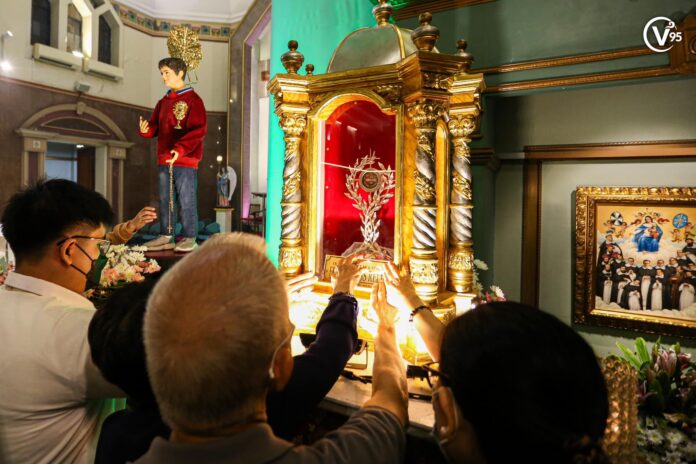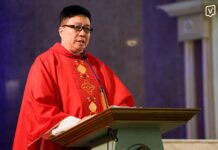
“MARUNONG po siya sa internet pero banal.”
BLESSED Carlo Acutis, the Italian teenager who is one miracle away from becoming the Church’s first millennial saint, shows that the youth can maximize the power of technology to propagate the Catholic faith, a UST Central Seminary alumnus said in a Mass welcoming the blessed’s pilgrim image and first-class relic on Monday, Nov. 13.
Seventeen years after his death, Acutis remains an “accompanying presence” needed by today’s youth, one who lived like a typical teenager but became extraordinary for proclaiming his faith, said Fr. Christian Dale Dakila, parochial vicar of the Diocesan Shrine and Parish of St. Thérèse of the Child Jesus in Los Baños, Laguna.
“Naglaro po siya ng sports; nanood po siya ng cartoons; nanood po siya ng ‘Pokémon,’” Dakila said in his homily. “Carlo reminds us that we can follow Christ and we can be like Christ. Puwedeng maging banal at dapat maging banal.”
Acutis pored into computer science textbooks at nine years old, according to his mother Antonia, and created a website, “Miracoli Eucalisti” or “The Eucharistic Miracles of the World.”
Dakila said Acutis sends the message that faithfulness remains important, especially amid hate-filled social media, where users hurl non-stop insults and calumnies in comment sections.
“Napakaingay po ng mundo ngayon. We have lost our ability to become silent even in the most important aspect of our lives,” Dakila lamented.
“Nabuhay po siya sa panahong mabilis ang takbo ng internet, pero nagawa niyang maging payapa ang kaniyang isip, kaluluwa at kalooban. Pinili po [niya] ang pinakamahalaga,” he added.
Even if truth-tellers like Acutis – and, by extension, Jesus – are vulnerable to bashing, Dakila urged the faithful not to stand down.
“[M]asasabi po nating marami pong sa atin ang takot ma-bash pero si Carlo Acutis po, katulad po ni Hesus, hindi po tayo dapat matakot ma-bash,” the alumnus said. “Hindi po dapat tayo matakot na mahuli sa uso at ang dapat lang pong katakutan natin ay [ang] mawalan [tayo] ng kakayahang magmahal.”
The pilgrim image and relic of Acutis arrived at the University at 4:30 p.m. on Nov. 12, with Vice Rector for Religious Affairs Fr. Pablo Tiong, O.P. leading the welcoming rites.
According to a schedule issued by the Office of the Secretary General, a holy hour for youth sanctification will be held on Friday, Nov. 17.
Public veneration will last until Nov. 20, with farewell rites to take place at 7:30 a.m.
Born in London on May 3, 1991, Acutis moved to Milan, Italy, and used “new communications technology to transmit the Gospel, to communicate values and beauty,” Pope Francis wrote in his 2019 post-synodal exhortation “Christus Vivit (Christ is alive).”
He succumbed to acute promyelocytic leukemia on Oct. 12, 2006, at the age of 15.
Seven years after his death, in 2013, the Diocese of Assisi in Milan opened an investigation to explore the possibility of Acutis being canonized as a saint.
The petition is now close to reality. Pope Francis beatified the teenager on Feb. 21, 2020, after the Vatican confirmed a miracle in Brazil attributed to Acutis’s intercession.
In that miracle, a boy who was born with a pancreatic defect and could only take in liquids prayed a novena asking for Acutis’s intercession; shortly after coming home, he could suddenly eat solid food.
One more miracle attributed to Acutis is needed before he is declared a saint.
As of 2017, just 120 of over 10,000 saints recognized by the Church died during their childhood or teenage years, most of whom were martyrs from the French Revolution, according to the National Catholic Register.
The weeklong event is organized by the Friends of Blessed Carlo Acutis Philippines and Tropa ni Carlo Acutis in partnership with the Office of the Vice Rector for Religious Affairs, Santisimo Rosario Parish, and the UST Center for Campus Ministry. With reports from Sheila May S. Balagan













